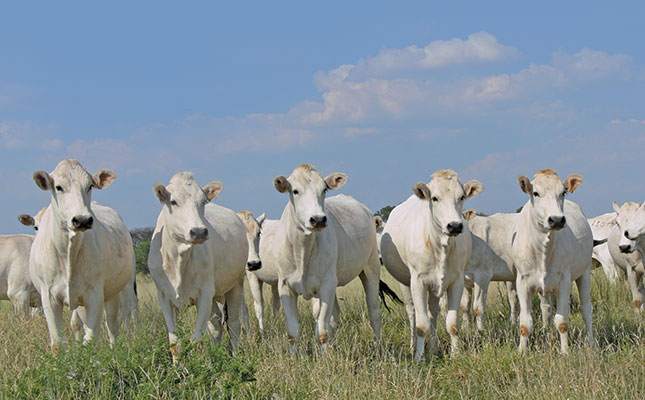Towering, snow-white, and surprisingly gentle—Chianina cattle are turning heads and shifting perceptions across South Africa’s beef industry. On a farm nestled in the Baviaanskloof mountains near Uniondale in the Western Cape, Garren Coetzee is helping reintroduce this ancient Italian breed to a modern market that’s hungry for high-yield, premium-quality meat.
Together with his late father, Gert, Garren founded the Monti Bianchi Chianina Stud in 2020 with a clear vision: to bring genetics that deliver both in the show ring and at slaughter weight. That vision quickly gained national attention in 2021 when they paid a record-breaking R1.175 million for a bull named Ridolfi at the O-La-La Chianina Auction in Vryburg.
“It was a bold move,” Garren admits, “but the payoff has been tremendous. Ridolfi’s genetics have elevated our stud and brought measurable returns, both in terms of quality and animal sales.”
But what makes Chianina cattle so valuable?
Originally from Italy’s Chiana Valley, the Chianina is one of the oldest and largest cattle breeds in the world. Bulls regularly reach weights of over 1,200kg, with some standing taller than 180cm. Despite their size, they are known for being docile, low-maintenance, and incredibly efficient. In well-managed herds, daily weight gains exceed 2kg, with feed conversion ratios under 5kg of feed per kilogram gained—well above industry benchmarks. Dressing percentages range from 63% to 65%, far surpassing the average of 50% to 60%.
“They’re not just big animals,” says Coetzee. “They’re big earners. A single Chianina stud bull or cow often sells for more than double the average price of other breeds. This means you can hold greater value with fewer animals—freeing up land, reducing input costs, and improving your bottom line.”
Chianinas also shine in crossbreeding programmes. When crossed with indigenous breeds like the Nguni, the offspring are not only heavier at birth and weaning but also mature faster, fetch better prices at feedlots, and maintain the easy birthing traits thanks to the Chianina’s narrow head. One long-term case study showed a 60kg weight advantage at 205 days when using a Chianina bull over an Nguni bull.
Then there’s the meat quality. Chianina beef is famously lean yet tender, with just the right amount of marbling to elevate flavour without excessive fat. It’s the signature cut used in Italy’s famous Bistecca alla Fiorentina and is the only beef served at the exclusive Babel Restaurant at Babylonstoren in the Cape Winelands—a nod to its premium status.
Despite their global success, there are only about 780 registered Chianina cattle in South Africa. Coetzee hopes to change that. “They’ve been around here since 1984, but they’re still rare. That scarcity has more to do with availability than suitability. These cattle thrive in our climate, cope with heat and rocky terrain, and have no trouble calving despite their size.”
Today, the Monti Bianchi Chianina Stud boasts around 90 animals and continues to grow. Garren is focused on quality, not just numbers. Phase C testing helps identify the best-performing bulls, and showing the cattle at agricultural events helps raise awareness of the breed’s untapped potential.
“Chianinas have it all—size, temperament, efficiency, and quality,” he says. “They’re not just impressive to look at; they make financial sense. And once you see one in real life, it’s hard to go back.”



